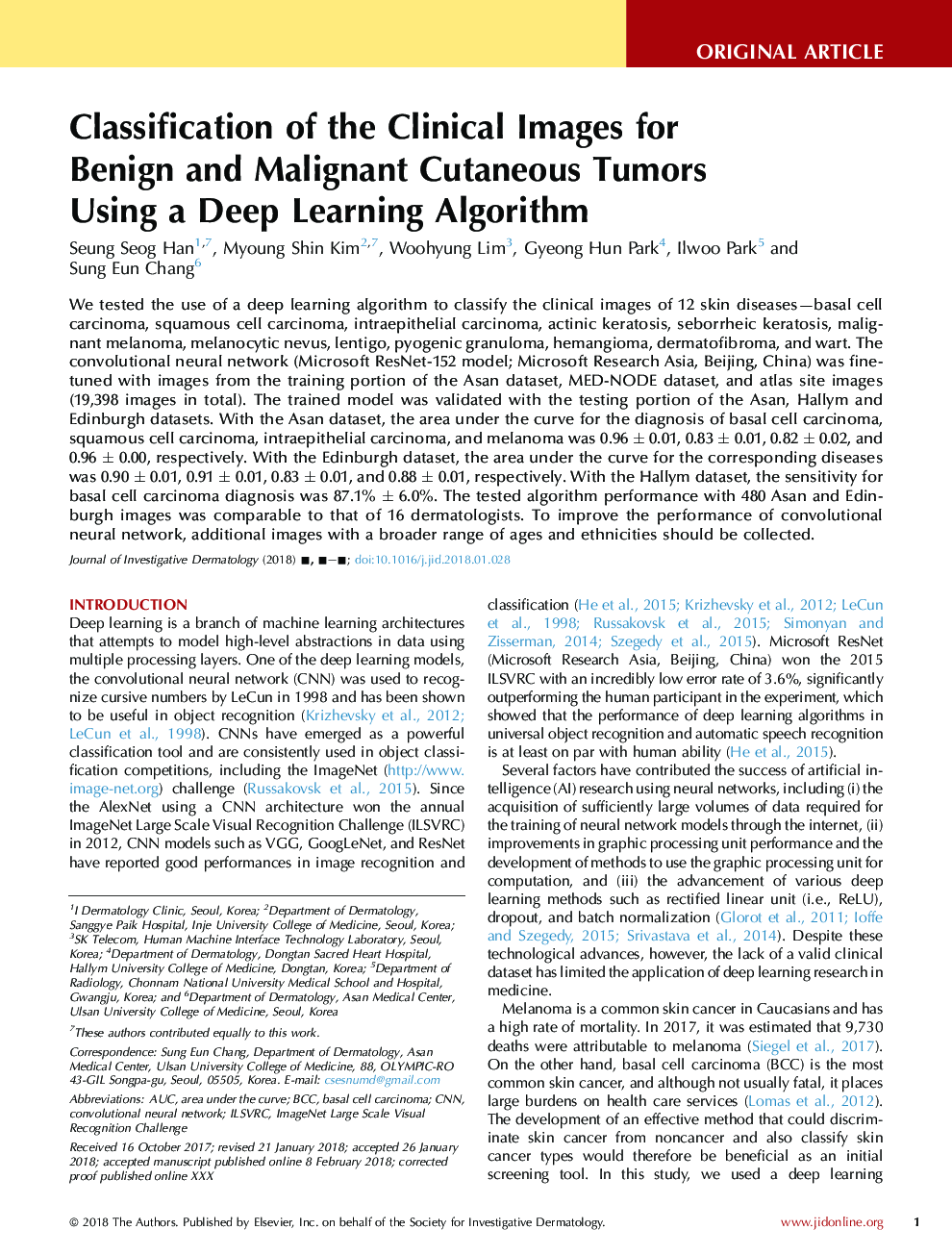| Article ID | Journal | Published Year | Pages | File Type |
|---|---|---|---|---|
| 8715846 | Journal of Investigative Dermatology | 2018 | 10 Pages |
Abstract
We tested the use of a deep learning algorithm to classify the clinical images of 12 skin diseases-basal cell carcinoma, squamous cell carcinoma, intraepithelial carcinoma, actinic keratosis, seborrheic keratosis, malignant melanoma, melanocytic nevus, lentigo, pyogenic granuloma, hemangioma, dermatofibroma, and wart. The convolutional neural network (Microsoft ResNet-152 model; Microsoft Research Asia, Beijing, China) was fine-tuned with images from the training portion of the Asan dataset, MED-NODE dataset, and atlas site images (19,398 images in total). The trained model was validated with the testing portion of the Asan, Hallym and Edinburgh datasets. With the Asan dataset, the area under the curve for the diagnosis of basal cell carcinoma, squamous cell carcinoma, intraepithelial carcinoma, and melanoma was 0.96 ± 0.01, 0.83 ± 0.01, 0.82 ± 0.02, and 0.96 ± 0.00, respectively. With the Edinburgh dataset, the area under the curve for the corresponding diseases was 0.90 ± 0.01, 0.91 ± 0.01, 0.83 ± 0.01, and 0.88 ± 0.01, respectively. With the Hallym dataset, the sensitivity for basal cell carcinoma diagnosis was 87.1% ± 6.0%. The tested algorithm performance with 480 Asan and Edinburgh images was comparable to that of 16 dermatologists. To improve the performance of convolutional neural network, additional images with a broader range of ages and ethnicities should be collected.
Related Topics
Health Sciences
Medicine and Dentistry
Dermatology
Authors
Seung Seog Han, Myoung Shin Kim, Woohyung Lim, Gyeong Hun Park, Ilwoo Park, Sung Eun Chang,
